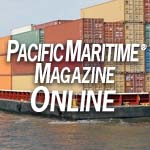“We are excited to offer another way of sharing what we learned about ecosystem conditions in the Gulf of Alaska last year,” said Bridget Ferriss, editor of the Gulf of Alaska Ecosystem Status Report. “This video is a nice complement to our other communications products.”
For years, Alaska Fisheries Science Center scientists have been compiling information from various indicators such as “water temperature, plankton abundance, and seabird reproductive success,” according to NOAA.
They observed these indicators for the four marine ecosystems encompassing Alaska: the Aleutian Islands, the Bering Sea, the Gulf of Alaska, and the Arctic.
The North Pacific Fishery Management Council, which annually establishes catch limits for groundfish and crab in federal waters off Alaska, rely on scientific research and other data to set those boundaries.
“Ecosystem assessments help us understand the context by explaining, among other things, how changes in the ecosystem might affect present and future abundance of commercially important fish and crab stocks,” said Ferriss.
Check out the report here: https://www.fisheries.noaa.gov/alaska/ecosystems/ecosystem-status-reports-gulf-alaska-bering-sea-and-aleutian-islands
Check out the video here: https://www.fisheries.noaa.gov/media-release/noaa-fisheries-releases-new-video-looking-environmental-conditions-gulf-alaska-2020

